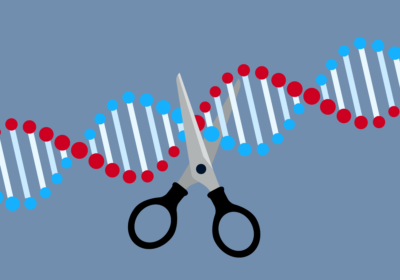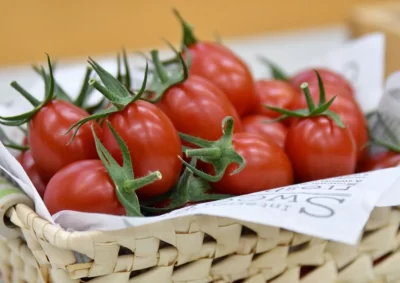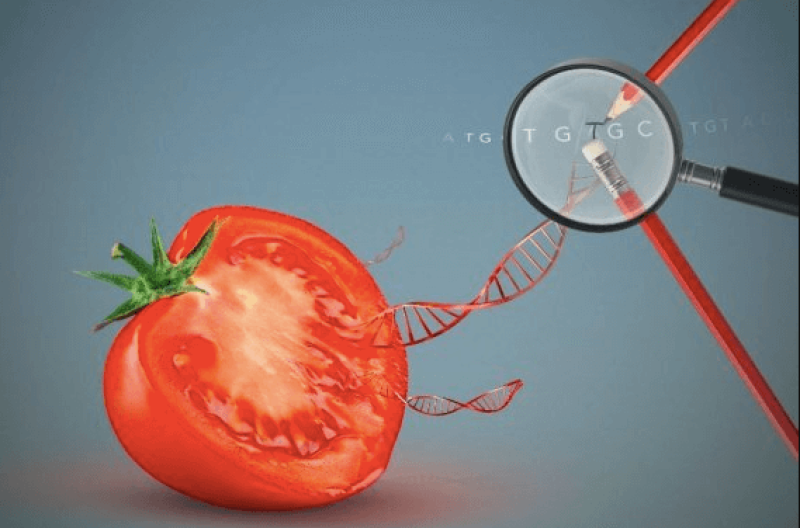In 2020, two women received the Nobel Prize in Chemistry. And for what reason? The two scientists developed CRISPR, a tool that can edit DNA.
Edit, just as we edit our photos before posting them on Instagram. With CRISPR we can edit the DNA of different microorganisms.
In this article you will understand what this technology is, how it works, what it is for, how it has the potential to change our diet and what are the controversies that surround it.
Remembering that this is the second of a series of five posts. You can read here what we wrote about molecular agriculture, and don’t miss the next ones, on transgenics, precision fermentation and cultured foods.
After all, what is CRISPR?

Image by: TheScientist
CRISPR is an acronym for: Set of Regularly Spaced Short Palindromic Repeats, but you don’t need to know what all those complicated words are.
What you need to know is that CRISPR is a kind of “genetic scissors” that allows scientists to change part of a cell’s genetic code. That is, with this “scissors” we can, for example, “cut” a special part of the DNA, causing the cell to produce or not a certain protein.
Thus, using CRISPR, scientists can precisely modify the DNA of animals, plants, and microorganisms.
What is it for?
Even though it is a new technique, CRISPR is already being used and tested in different ways. The main one is its application in plants. This system brings the possibility of bringing genetic improvements to the plants, making them capable of resisting mold, pests and water stress, for example.

Image by: Synthego
Another example that we can give is that, in the laboratory, scientists are also editing the genes of animals like the pig, so that it develops organs that can be transplanted into human beings without rejection.
But, let’s go to the main thing:
How does CRISPR work in the food we eat?
The truth is that foods modified with the CRISPR system have already reached the plate of many. And, more than that, it is making some foods healthier, tastier and more attractive to a larger number of consumers.
Here’s an example: How many times, when we were children, didn’t we refuse to eat some vegetable or fruit because it didn’t look good, or smell, or even taste so nice?
Nowadays, CRISPR would come to our rescue, making these foods more “beautiful” and tastier, reducing the bitter taste of many vegetables and enhancing the flavor of fruits.
Companies are already investing in this idea. Pairwise, an American company, is currently working on more appetizing variants of leafy greens, cherries and berries.

CRISPR pode tornar as folhas menos amargas. / Image by: Pairwise
But it’s not just the flavor that’s the focus. Making food even more beneficial to our health is also a goal.
In 2021, Japanese startup Sanatech Seed began selling the first CRISPR food to reach the consumer market: tomatoes containing large amounts of GABA, a compound naturally produced in our brains and capable of reducing levels of stress and anxiety.

CRISPR modified tomatoes/ Image by: Sanatech Seed
That is, instead of taking supplements, people in Japan can increase their GABA intake simply by eating tomatoes.
What is the difference between CRISPR and conventional GMO?
Much of that answer has to do with process. Whereas traditional techniques used in genetically modified organisms use viruses to hunt down and replace parts of DNA, CRISPR gene editing uses precision to sculpt genes on a minuscule scale. In other words, it’s like a tune-up compared to a demolition.
CRISPR = controversy?

Image by: Innovative Genomics
While CRISPR has been hailed by many as a breakthrough, for others it is a major concern.
One of the controversies surrounding the tool is that CRISPR can “cut” the wrong part of the genome, or make changes that were not planned. This can cause mutations and genetic diseases.
In 2015, a group of scientists (including one of those who would go on to create CRISPR) came together to call for a halt to the use of genetic modification in human genes.
As early as 2018, a Chinese researcher used CRISPR to genetically edit human embryos to make them immune to HIV. This experiment was completely condemned by the scientific community, the scientist was fired from the university and imprisoned for three years.
Thus, we see that there are two sides to the same coin.
Future or trend?
There are those who say that technologies like CRISPR or molecular agriculture are just trends that will eventually wane.
But what we see is the opposite: with each passing day, foods and plants are modified using these techniques, showing that in the near future, they will probably become part of our routine.
And you, what do you think?
Follow our articles to stay on top of the next posts in this series!
Sources: G1.com, Iberdrola.com, CropLifeBrasil, Innovative Genomics, FreeThink.com, WeForum.org, FDLI.org, Genetic Literacy Project, PacMoore



COMMENTS